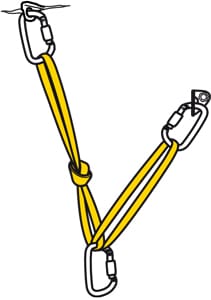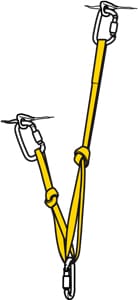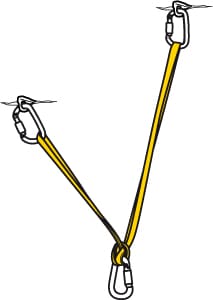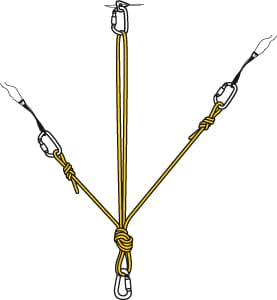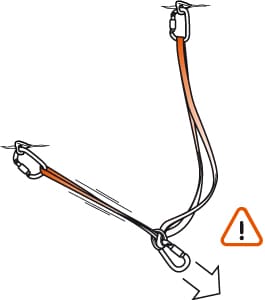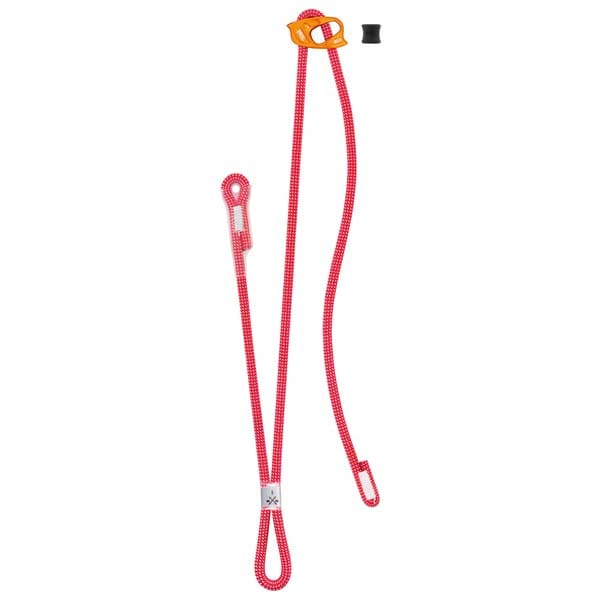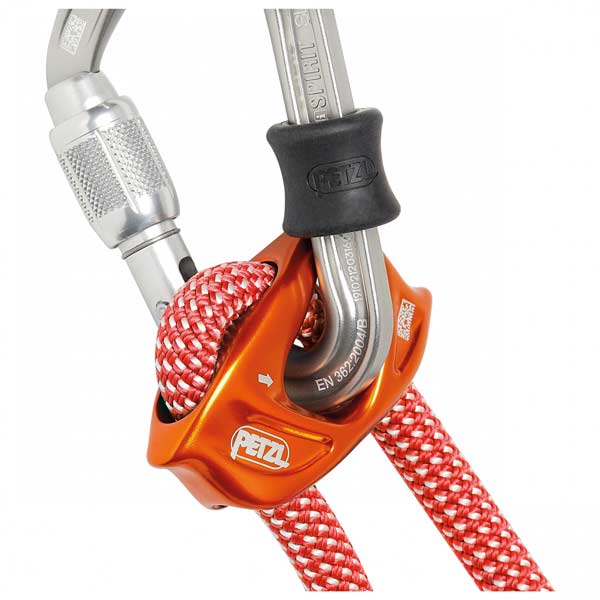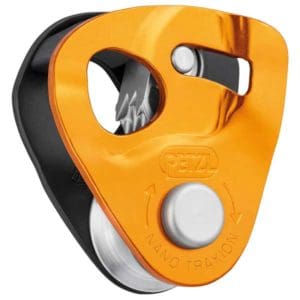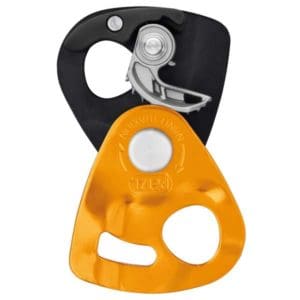A central technique in alpine climbing is the construction of the belay. In this article we will show you the advantages and disadvantages of individual belay construction techniques and the importance of the angle of the compensation anchorage.
The belay is the gathering point of the rope team, where the climbers can safely attach themselves and reliably secure their rope team partner. But what do you have to pay attention to when building a stand? What techniques are there? We show the most common methods.
- At least two interconnected belay points should be provided and the possibility of an anchor breaking out should be taken into account.
- In the case of a belay with uncertain anchorages or on doubtful rock, the force triangle allows the load to be distributed over the belay points.
- A belay can be made with or without a knot at the central point.
Stand without knots at the central point
If no knot is made at the central point of the stand (picture below), the lower point of the triangle of forces is mobile, i.e. movable. This has the advantage that in the event of a lateral tensile load, the load is distributed evenly over the two fixed points. However, if a belay point breaks out without a knot, the central point slips to the end of the sling and thus leads to a heavy load on the second anchorage.
(+) Advantage: In the event of a lateral tensile load, the load is distributed evenly over the fixed points.
(-) Disadvantage: If one securing point breaks out, the second securing point is heavily loaded.
To counteract the disadvantage of belaying without a knot at the central point, the webbing sling can be untied at the weaker anchorage or on both sides. If a fixed point breaks out, the load on the remaining fixed point is reduced by unbuttoning it.
Note: If the eyelet of the bolt becomes clogged or its position causes lateral loading of the carabiner, the webbing sling can be anchor-stitched to either of the two anchor points. In this case, make sure that the edges of the bolt do not cut into the sling.
Stand with node at the central point
If the central point of the stand is tied off, the lower point of the triangle of forces is not mobile. This has the advantage that there is no fall load (sliding of the carabiner to the end of the sling) on the second fixed point if an anchor breaks out. The disadvantage of this variant, however, is the poor distribution of forces in the event of lateral tensile loading.
(+) Advantage: No fall stress when an anchor breaks out (pendulum to the second fixed point)
(-) Disadvantage: Poor distribution of forces in the event of a lateral tensile load.
Angle of compensation anchorage
The angle of a stand's leveling anchorage is a key element to consider when constructing a stand. The more acute the angle of the compensation anchorage, the better the load is distributed to the individual fixed points. At an angle of < 8°, the load is distributed evenly (50% each) to the two anchors. At an angle of 90°, the load per fixed point increases to 71%!

Helpful equipment on alpine climbing tours
The construction of a stand therefore involves some pitfalls and must be done carefully. Little helpers who make the day on the high wall easier are all the more welcome on alpine climbing tours.
Simple and convenient - self-locking thanks to Dual Connect Adjust
This is one of those helpers Petzl Dual Connect Adjust. If you tie yourself to the stand with a sling or daisy chain, you can no longer change anything on the system during the securing process, i.e. adjust the length - even if the position suddenly becomes uncomfortable and you would rather stand on the heel further down.
With the Dual Connect Adjust from Petzl, you can quickly and easily secure yourself while standing and change the length of your standing position at any time.
With the Dual Connect Adjust from Petzl, you can quickly and easily secure yourself while standing and change the length of your standing position at any time.
This is worth its weight in gold if you are belaying at uncomfortable belay points over several rope lengths or if you want to extend the belay for a short time to check on the leader or second climber.
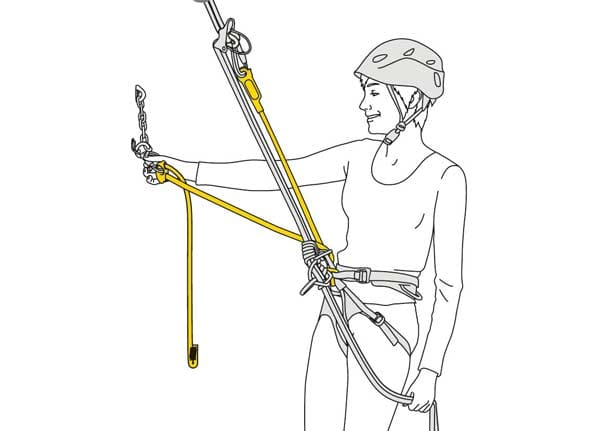
Another advantage of the Dual Connect Adjust is the dynamics of the rope. In contrast to securing with a sling, the rope of the Dual Connect Adjust, due to its dynamics, absorbs part of the load that arises in the event of a sudden load on the system.
Rope stuck when abseiling? A case for the Nano Traxion
Another pitfall in alpine climbing is the moment of abseiling, especially on tours with rock spikes and crevices or bushes/trees. Sooner or later you too will be confronted with the situation that when you pull off the rope you have to realize to your dismay that although you still have both ends of the rope with you, the rope cannot be pulled off any further. And there is only one thing: climb up the two ends of the rope to the point where the rope got stuck. This is usually done using two Prusik slings on the two strands of rope. But the operation is rather tedious.
The ascent to the said point is much easier with two backstops.
The ascent to the said point is much easier with two backstops. Our favorite is the idler pulley NanoTraxion by Petzl. With a weight of 53 grams each, the two pieces of equipment are hardly significant and can easily be carried on the rear gear loop of the climbing harness.
With a weight of 53 grams each, the two pieces of equipment are hardly significant
That's why the Dual Connect Adjust and two Nano Traxions have been part of our standard equipment for an alpine climbing tour for quite some time.
That might interest you
- Light and incredibly bright: the IKO Core headlamp from Petzl
- A helmet for all your outdoor adventures: Petzl Meteor
- Four beautiful and easy multi-pitch routes for autumn
- Sébastien Berthe criticizes the evaluation of European multi-pitch routes
Do you like our climbing magazine? When we launched LACRUX, we decided not to introduce a payment barrier. It will stay that way, because we want to provide as many like-minded people with news from the climbing scene.
In order to be more independent of advertising revenue in the future and to provide you with even more and better content, we need your support.
Therefore: Help and support our magazine with a small contribution. Naturally you benefit multiple times. How? You will find out here.


